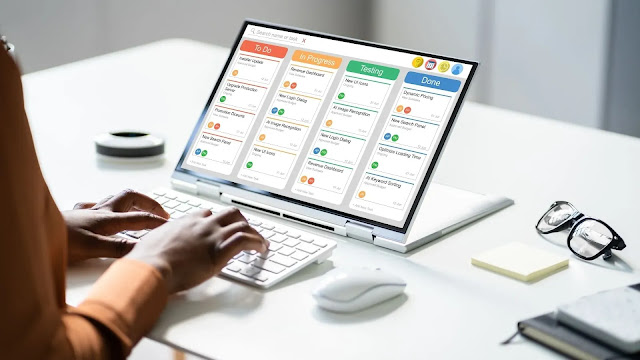How Does the Right POS Design Boost Your Restaurant’s Productivity?
Did
you know you can even engineer your POS so it
replicates your menu? This is the commencement of your restaurant’s
advancements. Numerous restaurants are deprived of this facility.
If your restaurant management system
allows you to modify your POS, there are high chances that efficiency
will increase by at least 20%. Having tasks automated that were done
manually earlier, boosts your staff efficiency, allowing them to serve your
guests better.
A traditional POS is nothing more than a
billing software that can accept payments online and offline separately.
However, an advanced and integrated POS is more than that; it can record
customer transactions, streamline order taking, integrate back office to the
front, and much more. A restaurant can reap tremendous benefits
by optimizing this system alone.
Engineer
Your POS to Imitate Your Menu
A POS should enable you to organize and display each
food item from your inventory the way it is on your menu. It should be
able to handle the conventional ordering. For instance, if a customer wants
extra ketchup with fries and extra cheese on the burger, your employee can
instantly record it and transfer the details to the accurate food
counter. Order recording becomes a very convenient task for the employees
without having to ask the customer twice.
You
can also set different menus according to a specific shift. For example, in the
morning you can display breakfast options so that the customers arriving at
your restaurant at that time only get to see the breakfast items first. This
way, you can easily increase upselling while increasing the efficiency of your
staff. Thus, your staff can serve the guests with more enthusiasm since the POS is
now handling extras on their behalf.
Break Down Menu Items
A typical breakfast menu can add up to dozens of dishes such as
boiled eggs, omelet and toast, baked beans, and so on. If you list every menu
item separately on the POS, it will end up
building an extensive list while making everything a lot more
complicated than it already is. For example, if a customer and his friend order
the same dish but the friend orders extra cheese, there will be transactions
twice. This makes the entire process a lot longer, and there are
always chances of filling the order. This sort of POS has serious
drawbacks:
Slower ordering: your front
office staff has to go through a thorough list of items
while ensuring they tap on the correct ones. It is a lot more time-consuming
and fuels the risk of errors.
Difficult reconciliation: when
you have to record multiple dishes separately, their reconciliation
becomes tedious. It may even end up taking hours just to get this job
done.
Complicated menu: you
cannot optimize the menu if you do not know the best dish and the
right mix-match distinct items to create an alluring
menu.
With LS Retail, you can set a few
dishes in your menu and optimize the modifiers to add or remove
ingredients. In addition, you can catch more accurate food costs, streamline
inventory management while aligning replenishment to the actual
use.
Use
Colors to Differentiate Different Items
As soon as you successfully set your POS replicating
your menu, this is where the fun part begins. Play with assorted
colors to differentiate dishes. For instance, you can set starters as
blue, the main course as purple, and desserts as pink. Pick colors for
different food sections like green for salad, yellow for chicken, white for
fish, and so on. With this sort of color setting, your staff can easily
differentiate between dishes and make the order-taking process
quicker.
Allow
Self Service and Contactless Ordering
You can increase both staff efficiency and customer satisfaction
simultaneously, as self-service is becoming increasingly popular among guests
especially in quick and fast restaurants. Customers love the convenience of the
technology. Many restaurants have noticed a hike of 15%-20% of checkouts after
allowing self-service and self-ordering facilities.
According to some research, customers order more add-ons and are
willing to pay more when they have the facility to add whatever they want on
their own, instead of asking someone to do it for them. Self-service devices
also speed up the table and ordering turnover as the guests are free to order
whenever they are ready.
LS Retail is one of the unified software service
providers that delivers a set of tools and features required to run a
restaurant business. Integrated POS is one of its services. Trident Information
Systems is a Gold Microsoft Partner. Since 1999, they have
served various business ventures and failed none. Contact us for further information.



Comments
Post a Comment